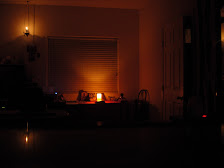 The Holy Trinity-St. Sergius Lavra
The Holy Trinity-St. Sergius LavraJuly 25, 2008, 14:50
This is the tenth in a series of RT online reports on Christianity in Russia, from its arrival more than 1,000 years ago to the present day…
The fall of the Soviet Union saw Russia enjoy a massive revival of Orthodox Christianity. Worshippers and pilgrims are once again flocking to the country’s revered shrines. Here are some of Russia’s most famous churches and monasteries.
Since ancient times, the largest and most important Russian Orthodox monasteries were called “Lavra” (from the Greek “monastery”). Russia has two. The Holy Trinity-St. Sergius Lavra, 70 kilometres from Moscow, was founded in the 14th century by the St. Sergius of Radonezh, one of Russia’s most venerated saints. The monastery and the city built around it, Sergiev Posad, are a Russian Vatican of sorts. A major spiritual magnet and a unique historical site, the Lavra is world-famous for the rare beauty of its murals and the captivating singing of its choir.
 Alexander Nevsky Lavra
Alexander Nevsky Lavra Alexander Nevsky Lavra was founded by Peter the Great in 1710 in St. Petersburg - seven years after the city itself. Construction works lasted for almost a century. The monastery complex is home to some of St. Petersburg’s oldest buildings. From the outset, the Lavra was known as the most prestigious burial site in Imperial Russia where members of the royal family, priests, prominent poets and composers were laid to rest.
 Cathedral of Christ the Saviour
Cathedral of Christ the Saviour Russia’s largest and one of the most famous cathedrals has literally been rebuilt from the ruins. The Cathedral of Christ the Saviour in Moscow was originally constructed in the 19th century to commemorate Russia’s victory over Napoleon. It took more than 40 years to build... and only a day to reduce to rubble on Stalin’s orders in 1933. The prominent site of the cathedral was chosen for a monument to glorify communism, known as the Palace of Soviets. The gigantic building was meant to be crowned with a massive statue of Lenin. But when the foundations were built it became clear that because of dozens of underground natural springs they’d never support the enormous structure. The onset of World War II put the project on hold. The plan never went ahead, Nikita Khrushchev later transforming the site into the world’s largest open-air public swimming pool. The cathedral was rebuilt in the 1990s, becoming a symbol of Russia’s spiritual revival and the newly found power of the Russian Orthodox Church.
 Seraphimo-Diveevsky Holy Trinity convent
Seraphimo-Diveevsky Holy Trinity conventOne of Russia’s major spiritual centres is Nizhny Novgorod region, more that 400 kilometres East of Moscow. It’s home to Seraphimo-Diveevsky Holy Trinity convent, Russia’s largest. It’s said to be a place of miracles and prophesies. The legend has it that the Mother of God herself indicated this place for a great convent to be built. It houses the relics of Saint Seraphim of Sarov – one of the most revered Russian monks and mystics, and is also renowned for its holy springs that are said to cure all illnesses. Seraphimo-Diveevsky Holy Trinity conventFounded in the 18th century, the convent had its churches used as warehouses during the Soviet times. Now reopen, it attracts thousands of worshippers from Russia and abroad.
Christianity: 1020 years of Russian faith
Kiev: the cradle of Russian Christianity
Moscow becomes ‘third Rome’
Old Believers break from Russian Orthodox Church
Peter the Great’s reforms bring religious renaissance
Bolsheviks raze Orthodox Church to the ground
Aggressive atheism in the Soviet era
How Gorby’s glasnost made a saint of a tsar
Friends again: how the Orthodox Church healed a split
SOURCE:
READ THE PREVIOUS POST RELATED TO THIS STORY:









.jpg)






No comments:
Post a Comment